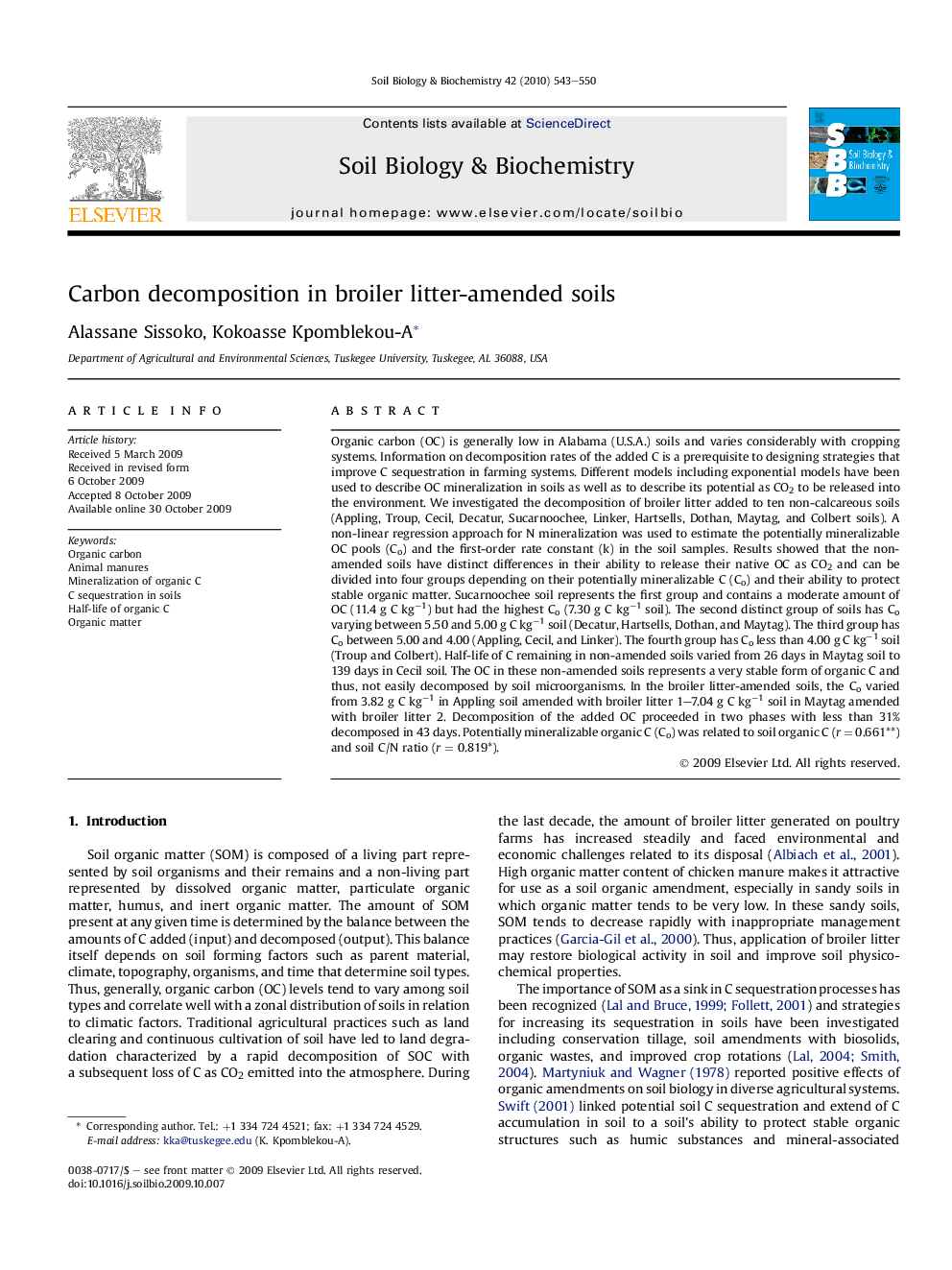| Article ID | Journal | Published Year | Pages | File Type |
|---|---|---|---|---|
| 2025051 | Soil Biology and Biochemistry | 2010 | 8 Pages |
Abstract
Organic carbon (OC) is generally low in Alabama (U.S.A.) soils and varies considerably with cropping systems. Information on decomposition rates of the added C is a prerequisite to designing strategies that improve C sequestration in farming systems. Different models including exponential models have been used to describe OC mineralization in soils as well as to describe its potential as CO2 to be released into the environment. We investigated the decomposition of broiler litter added to ten non-calcareous soils (Appling, Troup, Cecil, Decatur, Sucarnoochee, Linker, Hartsells, Dothan, Maytag, and Colbert soils). A non-linear regression approach for N mineralization was used to estimate the potentially mineralizable OC pools (Co) and the first-order rate constant (k) in the soil samples. Results showed that the non-amended soils have distinct differences in their ability to release their native OC as CO2 and can be divided into four groups depending on their potentially mineralizable C (Co) and their ability to protect stable organic matter. Sucarnoochee soil represents the first group and contains a moderate amount of OC (11.4 g C kgâ1) but had the highest Co (7.30 g C kgâ1 soil). The second distinct group of soils has Co varying between 5.50 and 5.00 g C kgâ1 soil (Decatur, Hartsells, Dothan, and Maytag). The third group has Co between 5.00 and 4.00 (Appling, Cecil, and Linker). The fourth group has Co less than 4.00 g C kgâ1 soil (Troup and Colbert). Half-life of C remaining in non-amended soils varied from 26 days in Maytag soil to 139 days in Cecil soil. The OC in these non-amended soils represents a very stable form of organic C and thus, not easily decomposed by soil microorganisms. In the broiler litter-amended soils, the Co varied from 3.82 g C kgâ1 in Appling soil amended with broiler litter 1-7.04 g C kgâ1 soil in Maytag amended with broiler litter 2. Decomposition of the added OC proceeded in two phases with less than 31% decomposed in 43 days. Potentially mineralizable organic C (Co) was related to soil organic C (r = 0.661**) and soil C/N ratio (r = 0.819*).
Related Topics
Life Sciences
Agricultural and Biological Sciences
Soil Science
Authors
Alassane Sissoko, Kokoasse Kpomblekou-A,
